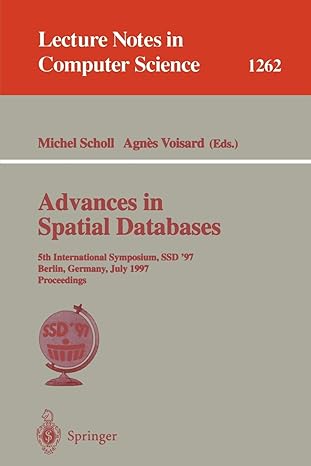Answered step by step
Verified Expert Solution
Question
1 Approved Answer
Introduction A Map is a type of collection that associates a key with a value. The mapping of keys to values can be accomplished using
Introduction
A Map is a type of collection that associates a key with a value. The mapping of keys to values can be accomplished using different underlying data structures. In this threepart assignment, you will be working with two such data structures and then using them to implement a Map. One is called a Linked List and the other is called a Tree.
A tree data structure can be defined recursively as a collection of nodes starting at a root node where each node is a data structure consisting of a value, together with references to nodes the "children" with the constraints that no reference is duplicated, and none points to root. A Binary Search Tree BST is a specific type of tree where each node can only have up to two children, and all of the data values in the left subtree of any node is always less than the node value and all of the data values in the right subtree of any node is always to the right of the node value.
In part III, you will be implementing a BST and then creating a Map that uses the BST to store and retrieve entries. As before, your Map should only use the BST by calling its methods. It should not touch inner variables like root or create node objects itself. That is the BSTs job to do internally.
Since the keyvalue pairs stored in the map could be of any type, we will be using Generics to implement all our classes. For example, we could have Andrew as a keyvalue pair which is of type and we could also have as a keyvalue pair which is of type Hence, it is important that we provide a way to reuse the same code with different inputs. Generics enable types classes and interfaces to be parameters when defining classes, interfaces and methods. Much like the more familiar formal parameters used in method declarations, type parameters provide a way for you to reuse the same code with different inputs. The difference is that the inputs to formal parameters are values, while the inputs to type parameters are types.
Note: You are NOT allowed to use any builtin Java data structures for any part of this assignment.
Program and Starter Code
You are being provided with starter code which is an interface representing a Tree. You can find it in the course public folder It contains the signatures of the methods that you need to implement. Do not change Tree.java. You will also need Map.java from previous parts of this project.
BSTjava inner class Node
You will need to create BSTjava. It will declare a class BSTdeclared as BST implements Tree This ensures that all data stored in your BST will have the compareTo method. When you begin writing the BST class, you will first need to define its own inner class Node declared as public class Node implements Tree.Node You will need to add fields such as the left child, right child, and parent and possibly other methods to make it behave as a BST node. It will need to implement the following methods:
public Node T value
The constructor for Node. It should initialize any necessary fields.
public void setValue T value
Sets the value of this node to the given parameter.
public T getValue
Gets the value of this node. Required for testing.
public Node getLeft
Gets the left child of this node. Required for testing.
public Node getRight
Gets the right child of this node. Required for testing.
public Node getParent
Gets the parent of this node. Required for testing.
BSTjava
Note: Your code may generate warnings about "unchecked call to compareTo" in BSTjava. You can put @SuppressWarningsunchecked before the signature of any methods that use compareTo to suppress these warnings. We are bending some Java rules, so the compiler will warn you of that unless you use the above annotation.
You also have to implement the following methods for the BST class:
public BST
The constructor for BST It should initialize any necessary fields.
public Node getRoot
Returns the root of the BST Required for testing.
public boolean add T value
Appends the specified value to the correct location in this BST You should use the compareTo method of the BSTs nodes' data when comparing to oYou should not call ocompareTonodevalue but node.value.compareToo for nodes' values in the tree. Should not add duplicate items to the BST
public String toString
Returns a string representation of this BST using indentation to represent each "level" of the tree. The root should be the furthest left when the string is printed, its children should be indented by spaces, their children by spaces, etc. Each node other than the root should be labeled as L for left children and R for right children. For example:
L even
the
L undo
R word
L zag
R zig
R zoo
public void clear
Removes all of the elements in this map.
Step by Step Solution
There are 3 Steps involved in it
Step: 1

Get Instant Access to Expert-Tailored Solutions
See step-by-step solutions with expert insights and AI powered tools for academic success
Step: 2

Step: 3

Ace Your Homework with AI
Get the answers you need in no time with our AI-driven, step-by-step assistance
Get Started


